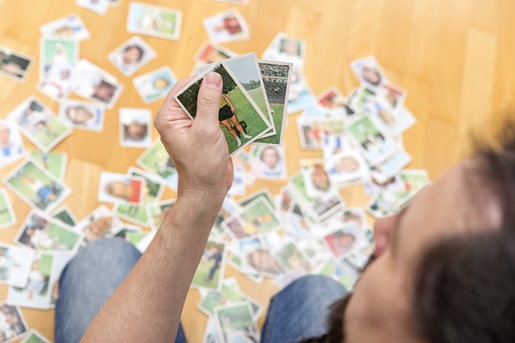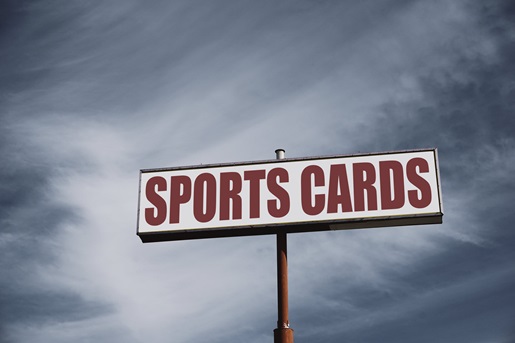Keeping your collection safe, organized, and easily accessible.
Trading card games (TCGs) are staggeringly popular, and not just among those dedicated to playing the respective games. Amassing an impressive collection of cards has grown into an attractive pastime in and of itself as people who grew up with franchises such as Pokemon, Yu-G-iOh, and Magic: The Gathering come into their own purchasing power. Pokemon cards regularly sell for thousands of dollars and are now seen as a legitimate alternative investment strategy.
As a result, collectors regularly find themselves needing to create digital versions of their cards. When you scan Pokemon cards (or scan trading cards from any game, for that matter), you make them easier to organize, access, trade, and sell. But it’s important to use equipment and technology that records a card’s value without damaging it. There are multiple approaches to scanning cards, each with its own pros and cons. Read on to learn best practices for scanning TCG cards while maintaining their value.
Digitizing your trading card collection is a great way to organize and share it while preserving your most valuable cards. Discover everything you need to know in our guide.
Jump to a section:
- Why scan Pokemon cards and TCGs?
- Photographing vs scanning Pokemon cards: Does it matter?
- Mobile apps for digitizing Pokemon and TCG cards
- How to scan using an app
- Best scanners for digitizing TCG cards
- Scanning rares: Special considerations for holographic and textured cards
- Our recommendation: ScanSnap SV600 and fi-8170
Why scan Pokemon cards and TCGs?
Scanning your TCG collection provides several advantages. Physical cards risk damage every time they’re removed from their secure storage configuration. Water, fire, dirt, and even sunlight can damage the card's value.
When you scan Pokemon cards, you can view a digitized version of the collection whenever you want, which means you don't need to get your cards out of storage to admire them. You can safely, easily, and even remotely share the contents of your collection with friends or fellow collectors without upsetting their organization or putting them at risk. Using a collection app even allows you to check the value of your cards in real-time, should you want to consider cashing in.
Did You Know?:The ScanSnap SV600 can automatically detect card edges and crop individual cards out of larger scanned images. Click here to learn more.
Photographing vs scanning Pokemon cards: Does it matter?
If scanning your Pokemon cards isn’t convenient, you can always take photographs of them instead. Thanks to smartphones, just about everyone has a decent-or-better camera within arm’s reach. Just be aware that while taking photos of your cards is simple and convenient, the process has different pros and cons than scanning.
The biggest advantage of photographing TCG cards is that you don’t have to be at home to do it. Most home scanners live on computer desks, which won’t do you much good if you’re selling Pokemon cards at a game store or trade show. Cameras also tend to capture holographic or foil cards better, as you can adjust the lighting to make the background pop. Scanners tend to standardize these colors and flatten them out.
On the other hand, taking good photos requires strong lighting and deliberate positioning. Shadows from your hands or the camera can ruin an otherwise excellent picture. Scanners, on the other hand, provide their own even lighting. You’ll also have to photograph your collection one card at a time, whereas scanners can handle multiple cards at once. This may be important if you have a lot of trading cards to sell.
Mobile apps for digitizing Pokemon and TCG cards
Collection apps are a popular way to scan Pokemon cards for collection digitization, and they work just as well with other leading TCGs. These apps don’t create digital images of the cards. Instead, they pull key info from the physical card and create a virtual representation of the card tagged with relevant information such as title and set of release to create an easily searchable library of your cards. You and other collectors can then peruse that library for an at-a-glance overview of the cards in your physical collection, making trading and selling that much easier.
TCGplayer App
TCGplayer is one of the most popular apps to scan Pokemon cards, YuGiOh cards, and MTG cards. It’s free to use, and its scanner function instantly catalogs and prices your cards as you scan them according to key data pulled from the card. Prices update in real-time, and the app provides a built-in marketplace for trading.
The scanning functionality is pretty effective, capable of scanning through sleeves and from binders. It can also scan multiple cards at once.
Dragon Shield
Another strong, free-to-use contender is Dragon Shield. Specific apps exist for Pokemon, YuGiOh, MTG, and Flesh and Blood. These apps can scan cards from any language, with real-time translation. Its scanning capabilities are comparable to TCGplayer’s, tagging and cataloging cards as they’re scanned according to name, set, and other identifiers. The app even automatically checks card prices from TCGplayer’s database.
Dragon Shield has a few quality-of-life features that help it stand out, such as the ability to sort cards into folders, add custom images to the folders, check the value of individual user-created folders, and compare trade value between two players. It also boasts a highly regarded support team.
Pokellector
Pokellector can scan Pokemon cards, but its main function is as a digital collection. It’s designed for collectors to check how many cards they own from each set of Pokemon card releases, so it's not as effective for those who want to keep track of multiple copies of the same card within the same set. It does not support other TCGs. Still, its scanning feature satisfies most users, and it provides up-to-date market value.
How to scan using an app
It’s important to note that collection apps aren’t making digital reproductions of your cards. Instead, they’re using your camera to read identifying data from the card, cross-referencing it with their card database, and adding the closest match to your digital collection. The result is a digital ideal of the card rather than an image of the specific card that you physically own. This means the color accuracy and glare problems that typically occur with phone camera-based scanning are less of a problem.
However, in order to ensure the app pulls accurate data from your card, it’s best to place the card on a plain, pattern-free surface to serve as a background. TCGplayer recommends printer paper when you scan trading cards, but anything simple that contrasts with the border of the card will work. When scanning, ensure the entire card fits within the frame, and scan at a 45-degree angle to reduce glare. As you scan cards, make sure the data being fed to the app is accurate. You’ll likely need to tweak a few details to ensure accurate filing and pricing.
Did You Know?:The ScanSnap SV600 works with CollX Card Dealer Pro Software to make trading, selling, and buying quick and simple. See it in action here.
Best scanners for digitizing TCG cards
What collection apps don't offer is an exact image of your card. As a result, they can't provide proof of the card's condition, they may misrepresent your card’s release edition by mistake, and they won't map exactly to the specific card that you own. They're a collection of data points that represent your card, not a digitization of the card itself. That's where trading card scanners can pick up the slack.
If you’re looking to scan Pokemon cards or other TCG collections in order to record true digital images, you’ll be best served by a desktop scanner. Phone scanning apps can be convenient for digitizing a few images at a time, but capturing more than a handful of cards quickly becomes a tedious task. These scanners also struggle with color accuracy, glare, and other visual imperfections.
Better suited to the challenge are desktop scanners, either those with automatic document feeders (ADF) or flatbed scanning. Flatbed or overhead scanners are the safest way to scan cards, as there’s no machinery through which the card must pass in the scanning process. They’re also relatively fast, as they can scan multiple cards in a single pass, but you may have to crop those scans into separate images using photo editing software.
ADF scanners are the fastest option, and many are gentle enough to avoid damaging cards as they’re scanned. Some can even scan through top loaders and other sleeves. But their speed gains are significantly undercut when using top loaders as the additional weight can raise the likelihood of a jam. Experts generally recommend feeding no more than five sleeved cards through the ADF at a time.
How to scan Pokemon cards and TCGs with a scanner
When you scan Pokemon cards, you’ll want to select the optimal settings on your scanner to ensure scans of the right quality, file size, and file type. Aim to scan in 300-600 dots per inch (DPI) to get high-quality scans that don’t take up too much digital storage space. JPEG is the most space-efficient image file type and comes equipped with decent quality, but PNG is preferred for its lossless compression, which condenses file sizes without losing image accuracy.
When you scan your first card, make sure the file is saved in the correct file path and with the right naming convention. A consistent file naming convention will make it much easier to organize your scans. It should contain any crucial identifying info — card name, expansion, and so on — so that you’ll know what it is without opening the image, saving you time during the organizing process.
How to protect your cards while scanning: Do's and don'ts
For the clearest possible scans, carefully dust each card before you scan it. Tissues and paper towels can leave behind residue or scratch your card, creating blemishes on the scan and hurting its resale value. A microfiber cloth or a can of compressed air can do the job more safely. Avoid touching the surface that’s going to be scanned, as your fingers can leave behind oils that degrade the card over time or visibly smudge it when scanned.
Regardless of scanner type, you should periodically dust it with your microfiber cloth. If you’re using a flatbed scanner, line your cards up along the edge of the scanning surface to keep them straight, then move inward, placing each card ¼ inch apart from the last. Top loaders and other protective sleeves make this easy by inherently providing that spacing.
When you’re finished scanning, you can use simple photo editing software to crop, rotate, or brighten images to your liking.
If you scan trading cards using a collection app such as TCGplayer or Dragon Shield, they will automatically sort the cards for you. When it comes to storing scans of your actual collection, however, the best option is to keep it in the cloud. Cloud storage is typically very affordable; many phones and computer operating systems even provide some amount of storage for free. Cloud-stored images can also be accessed from anywhere by anyone you approve — and no one else.
Scanning rares: Special considerations for holographic and textured cards
If you’ve been collecting Pokemon cards for a while, you’ve probably come across some pretty special ones. Some gorgeous holographic or textured cards are also extremely rare, as well as potentially valuable. If you want to scan a first-edition holographic crystal Charizard or shadowless Mewtwo, you’ll want to do it in a way that keeps the card in pristine condition.
The simplest way is to leave your card inside a clear sleeve while you scan it. This prevents potential scratches and creases, as well as protects the card from the natural oils in your skin. Remember that you may get a prettier scan without the sleeve, but if you damage the card, it could be impossible to replace.
Another alternative is to simply photograph shiny cards rather than scanning them. Cameras tend to capture holographic effects better than scanners do, and you can keep your distance as you take the photo. While scanning is a faster and easier way to digitize your whole collection, photographing a few special cards shouldn’t add too much time to the process.
Our recommendation: ScanSnap SV600 and fi-8170
We know you have no shortage of options when it comes to choosing a home scanner to scan Pokemon cards. We pride ourselves on having spent the last 50+ years designing and developing some of the most beloved electronics in the world, including our line of award-winning, easy-to-use, one-touch ScanSnap scanners and our professional grade fi Series of scanners.
The ScanSnap SV600 stands out among scanners for its innovative, contactless LED scanner. By avoiding physical contact with the scanned object, it poses the least risk of damage to treasured collector's items such as Pokemon cards. It boasts an expansive scanning surface for multi-card scanning, plus multi-document detection that recognizes individual cards and automatically crops and rotates them into their own correctly oriented images. With included ScanSnap software, it can send your scans directly to the cloud. Click here to learn more and shop the full line of ScanSnap scanners.
The fi-8170 is another suitable option for collectors looking to digitize. It comes equipped with blazing-fast ADF — scanning 50-70 pages per minute — and high-quality image data powered by PFU Clear Image Capture. The fi-8250 boasts the added flexibility of a flatbed scanner, allowing for gentler scanning of Pokemon cards. Visit our trading card page to learn more about how to scan trading cards.
Pokemon and Pokemon character names are trademarks of Nintendo. Other trademarks are the property of their respective owners.
Note: Information and external links are provided for your convenience and for educational purposes only. PFU America, Inc. makes no representations about the contents, features, or specifications on such third-party sites, software, and/or offerings (collectively “Third-Party Offerings”) and shall not be responsible for any loss or damage that may arise from your use of such Third-Party Offerings.






